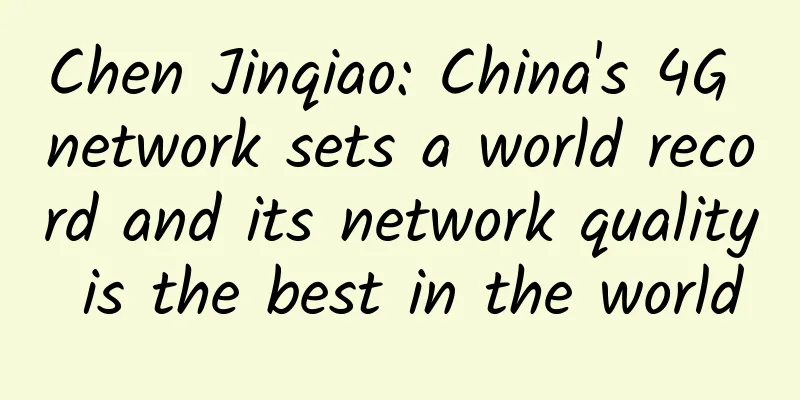Review and Outlook of China's 100-day 5G Licensing

|
Since June 6, when the Ministry of Industry and Information Technology issued basic telecommunications business licenses to four communications companies and approved the four companies to operate the "fifth-generation digital cellular mobile communications business", China's 5G commercialization journey has exceeded 100 days. Just over a hundred days is just a fleeting moment for 5G, which has the grand vision of "changing society" and is not worth "commemorating". But for China's 5G - a "premature baby" that has brought forward its planned commercial launch from 2020 to mid-2019 - standing at the 100th day since the issuance of commercial licenses, it is also a good commemoration to look back on the past and look forward to the bright prospects in the future. China's 5G, which issued commercial licenses ahead of schedule on June 6, is a "premature baby" born out of a variety of non-technical and non-market factors. China's previous timetable for full commercial use of 5G was 2020. This was a rational plan made by the three major operators based on the country's strategic positioning that 5G technology should be combined with vertical industry applications and enable industrial upgrading, as well as the 3GPP SA independent networking technology standard roadmap and the maturity of the ecological chain. However, after South Korea and the United States seized the first position in the global 5G commercialization in April this year, the anxiety in the domestic industry has been growing. At the same time, with the escalation of Sino-US trade frictions and the US's actions to suppress Huawei in the global market, the call that 5G should be commercialized as soon as possible to achieve an investment-driven effect ultimately defeated rational planning. The 5G commercial license was advanced by at least half a year and was born in June this year. Since 5G licenses were born prematurely, various congenital deficiencies are inevitable. (I) 5G network planning under the NSA path Although the three major operators have set SA independent networking that can support new business scenarios such as mMTC and uRLLC as the target architecture for 5G network construction, the full version of R16 to achieve SA is scheduled to be completed until March 2020. Therefore, the early issuance of licenses means that 5G commercial network construction can only choose NSA non-independent networking in 2019, and only support eMBB application scenarios. China's 5G commercialization has abandoned the SA first strategy and embarked on the NSA follow-up technology path. After the 5G licenses were issued, the three major operators announced their 5G commercial network construction plans, all aiming to cover 50 large and medium-sized cities in 2019. China Mobile plans to build more than 50,000 5G base stations, and China Telecom and China Unicom both plan to open 40,000 5G base stations. This 5G network construction plan is very conservative compared to the scale of China Mobile's construction of 720,000 4G base stations the following year after the 4G licenses were issued. Regarding this conservative 5G site construction plan, Yang Jie, chairman of China Mobile, explained at the 2019 GTI International Industry Summit held at the end of June: "China Mobile feels very conflicted about 5G technology. Although China Mobile has just released the 5G+ plan and plans to build 50,000 5G base stations in 50 cities this year, China Mobile also feels a little uneasy. Many of this year's 5G base stations are based on NSA. If 5G is to work, SA must be the target architecture network, so we hope to implement SA as soon as possible." China Mobile is not the only one with this dilemma: It wants to wait for SA but has to go with NSA, and therefore has to conservatively build NSA. China Telecom and China Unicom have also stated that they can only initially choose the NSA model for 5G network construction, but the ultimate target architecture of 5G must be SA, and they hope to achieve full commercial use of SA in 2020. Therefore, in line with the site construction plan, the three major operators announced a total of 41 billion yuan in 5G capital expenditure for 2019 at their interim results conference in August. Among them, China Telecom and China Unicom both maintained the 9 billion yuan and 8 billion yuan disclosed at the annual report conference in March. Only China Mobile increased its original 17 billion yuan by 7 billion yuan, announcing that it would invest 24 billion yuan in 5G construction this year. However, in stark contrast to the hesitation and conservatism of the three major operators is the impatience of local governments in 5G construction. After the issuance of 5G commercial licenses, many local governments issued policy opinions to accelerate the planning and construction of 5G base stations and industrial development, setting targets for operators in terms of the scale of 5G base station construction in their provinces. The Shanghai Municipal Government has issued a clear document requiring the construction of 10,000 5G base stations by the end of 2019, and a total of 20,000 5G base stations by 2020; the Hubei Provincial Government issued the "Hubei Province 5G Industry Development Action Plan 2019-2021", planning to complete the construction of more than 50,000 5G base stations by the end of 2021; the Zhejiang Provincial Government proposed in the "Implementation Opinions on Accelerating the Development of the 5G Industry" the goal of building 30,000 5G base stations by 2020 and 80,000 5G base stations by 2022. Shenzhen has become the most aggressive 5G city in the country. The Shenzhen Municipal Government has set itself the goal of "leading the country in 5G base station construction density", requiring the construction of 15,000 5G base stations by the end of this year and a total of 45,000 5G base stations by the end of August 2020, which actually exceeds the provincial plan of Zhejiang! In addition, the Shenzhen Municipal Government also issued the "Several Measures for Shenzhen to Take the Lead in Achieving Full Coverage of 5G Infrastructure and Promoting High-Quality Development of the 5G Industry" on September 11, proposing a reward policy of 10,000 yuan for each base station built by operators in the SA independent networking mode. Although this expresses the government's determination to promote the commercialization of SA by operators as soon as possible, it is also a dilemma corresponding to the reality that 15,000 5G base stations to be built by the end of the year can only be based on the NSA architecture. 2. 5G terminal policy under the entanglement of technical paths The dilemma of SA or NSA is also reflected in the 5G terminal policy. At the Shanghai MWC exhibition 20 days after the issuance of 5G commercial licenses, Yang Jie, chairman of China Mobile, said: "The Chinese government has also made it clear that starting from January 1 next year, 5G terminals must have SA mode, and starting from January 1 next year, NSA phones will not be allowed to access the network." Yang Jie's statement caused a huge stir. Currently, there are only three types of mature baseband chips that can be provided to mobile phone manufacturers to produce 5G terminals. Huawei and Samsung's self-developed chips are only for their own use, and the majority of Android mobile phone manufacturers generally rely on Qualcomm's Jiaolong X50. Among these three chips, only Huawei's self-developed and self-used Balong 5000 can support SA and NSA dual-mode. Qualcomm's dual-mode chip Jiaolong X55 will not be put into commercial use until the end of 2019 at the earliest. Taking advantage of its first-mover advantage and policy dividends, Huawei was the first to obtain China's first 5G terminal telecommunications equipment access license for its first 5G mobile phone Mate 20X (5G) on June 25, and was the first to set a price benchmark for 5G mobile phones in the market with a public selling price of 6,199 yuan. However, ZTE Axon 10 Pro equipped with Qualcomm NSA single-mode chip and China Mobile's Forerunner X1 were subsequently launched on the market, with prices of 4,999 yuan and 4,998 yuan respectively, which brought the price of 5G mobile phones down to less than 5,000 yuan; not long after, the price bottom line of 5G mobile phones was broken by iQOO Pro at 3,798 yuan and Xiaomi 9 Pro at 3,699 yuan at the end of September. In particular, Vivo's iQOO Pro was only 600 yuan more expensive than a 4G mobile phone with the same configuration. The three major operators' statement that they hope to fully commercialize SA in 2020 and the government's policy of setting limits on the access of NSA single-mode mobile phones to the network have greatly compressed the market space for NSA single-mode mobile phones and indirectly shortened the life cycle of Qualcomm X50 chip in the Chinese market. As a result, the price gap between 5G and 4G mobile phones has been forced to keep decreasing, creating favorable promotion conditions for young people who are willing to try out 5G mobile phones as soon as they are on the market, thus breaking the industry's previous concerns that the price of 5G mobile phones of nearly 10,000 yuan might become an obstacle to the commercial promotion of 5G. On September 11, the authoritative China Academy of Information and Communications Technology released the "Analysis Report on the Operation of the Domestic Mobile Phone Market in August 2019", which disclosed for the first time that 219,000 5G mobile phones were shipped in the domestic mobile phone market in August, and the total shipments of 5G mobile phones from January to August reached 291,000 units. However, by analyzing the report data of China Academy of Information and Communications Technology, it can be found that since the issuance of 5G commercial licenses in June and the official start of the transition period from 4G to 5G in the domestic mobile phone market, the shipments of 4G mobile phones in June-August have decreased by 4.5% year-on-year. In particular, the shipments of 4G mobile phones in August have dropped below 30 million units, a month-on-month decrease of 10.4% from July. At the new product launches of Xiaomi, Oppo, Vivo and other mobile phone manufacturers in the second half of the year, 5G mobile phones were a hot topic but not the focus, and their main products were still 4G mobile phones. It can be seen that after 100 days of 5G license issuance, domestic mobile phone manufacturers were forced to continue to bet on 4G new products for production and sales in the second half of the year due to the dilemma that Qualcomm SA chips cannot be commercialized in a short period of time and NSA single-mode mobile phones cannot be connected to the network next year. However, user demand in the mobile phone market has shifted to holding on to money to buy 5G mobile phones. 5G has not yet been launched, and 4G has declined first. The cold winter brought about by the issuance of 5G licenses to the domestic mobile phone market has arrived as expected. 3. Lack of 5G applications in eMBB scenarios As 5G terminals are launched one after another, the three major operators have launched 5G experience plans in August, giving users who buy 5G phones 100G experience traffic per month, so that they can experience a 5G download rate of no more than 1Gbps. As a result, it became popular to use the newly bought 5G phones to check in at 5G base stations, take screenshots with speed test software such as SPEEDTEST, and post them on WeChat Moments to show off the 5G network speed, and which operator has the strongest 5G signal has also become a hot topic. However, in addition to helping operators test speeds, the question of what else 5G phones can be used for has also arisen. In addition to allowing users to experience the superiority of downloading movies and watching online videos faster than 4G, such as fast speeds, the 1Gbps peak rate has also led to more and more voices questioning what 5G applications that can change society can be brought about by the eMBB application scenarios supported by the NSA network architecture. Judging from the three major operators' promotional descriptions of 5G application scenarios, whether it is China Mobile's 5G+, China Unicom's 5G n, or China Telecom's Hello 5G, they all use new applications such as high-definition video, AR/VR games, 5G distance education, 5G telemedicine, and 5G driverless driving as their main promotional features to magnify the difference between 5G and 4G and prove that 5G is not equal to 4G+1G. However, under the premise that the current 5G network construction adopts the NSA architecture and can only support eMBB application scenarios, even if its data transmission rate can be increased 10 times compared with 4G, in terms of meeting the needs of 4K/8K high-definition video, 3D video, AR/VR and other indoor application scenarios, 5G's enhanced mobile broadband has no special advantages over the fixed-line broadband of "gigabit optical network". Especially for distance education, telemedicine and other indoor application scenarios that have higher requirements for network stability, 100M fiber can perfectly solve the problem. Why should we spend double the cost to build 5G base stations to achieve this? What's more, the 3.5GHz mid-frequency band of 5G mainstream frequency band has poor penetration, and outdoor macro base stations cannot meet indoor signal requirements. In the case of the same need to pull in optical fibers and deploy small micro base stations, why should the application of high-speed data transmission rely on 5G networks at a high cost instead of a short distance and a low cost? As for autonomous driving, it mainly relies on the near-field communication between the vehicle's own communication module and other vehicles and the surrounding environment to achieve low-latency signal interaction. Therefore, from the perspective of safety and economy, even the uRLLC under the SA architecture cannot meet the requirements of autonomous driving for safety and coverage depth in terms of latency and construction cost. Where is the role of NSA? Therefore, in the current 5G network construction that uses the NSA architecture and can only support eMBB scenarios, it is understandable that operators graft some application needs that can be met by low-cost fixed-line broadband onto 5G to create publicity gimmicks, conduct advertising, and even cultivate the market. However, if operators really regard this as a source of income for 5G, and when it comes time to invest real money and hope that users will pay for it, it is probably time to take a true look at the investment and output of 5G. The three major operators started booking 5G packages at the end of September. The latest data shows that the number of users who have made reservations has exceeded 10 million, which seems to be a promising situation. But after the 5G tariff policy is announced, how many of these 10 million users will be willing to pay for the fast data consumption brought by 10 times the network speed? Moreover, even if some users are ready to try 5G, what 5G-required apps are available in the existing Apple and Android app stores? On September 12, Apple's latest iPhone released worldwide still does not support 5G. This is certainly due to chip-related reasons, but Cook's frank statement that "5G is still a little ahead of its time" when answering reporters' related questions is more objective. As Apple continues to be absent from 5G, its IOS ecosystem and APP Store cannot provide more innovative applications for the currently scarce eMBB applications of 5G. This is probably one of the major losses for the global 5G industry and China's 5G commercialization. (IV) China's 5G commercialization returns to its original aspirations and sets off again On September 20, 107 days after the issuance of China's 5G commercial licenses, Miao Wei, Minister of Industry and Information Technology, answered questions from Xinhua News Agency reporters about 5G at a press conference held by the State Council Information Office. He gave an official conclusion on the NSA and SA technology path choices that have sparked industry debate:
It should be understood that this is a strong corrective signal sent from the government level to pull China's 5G commercialization back from the wrong path of NSA to SA independent networking. At the same time, it is also a policy signal to set the tone and reduce pressure on the 5G development strategies of the three major operators. South Korea, which was the first to commercialize 5G, had developed 3 million users by September. Therefore, public opinion generally has high hopes for when China's three major operators will commercially launch 5G services after obtaining 5G licenses, and whether they can quickly surpass South Korea to become the market with the largest number of 5G users after launching 5G services. At the same time, attention has increased on the scale and construction speed of base stations of the three major operators, creating a new round of anxiety and pressure. However, Minister Miao's speech redefined the positioning of China's 5G commercial strategy, that is, 80% of 5G's real application scenarios are communication between things, which is a To B business model, and the To C model for mobile phone users only accounts for 20%. It is clear that the success of China's 5G commercialization cannot be determined and judged by how many 5G users are developed in a short period of time; The key to measuring the success of 5G commercialization lies in combining 5G technology with vertical industry applications, expanding connections from people to the Internet of Everything, and achieving social and economic value by enabling industrial upgrading. Therefore, small-scale deployment of NSA networks and cultivating users' interest and perception of 5G technology in the eMBB scenario can become a necessary process for gradually advancing the commercialization of 5G. However, eMBB (enhanced mobile broadband) supported by NSA is only an upgrade of the existing 4G speed and an improvement of the existing user experience. It cannot bring out the true performance of 5G and reflect the true value of 5G. Operators must have a clear understanding and rationally avoid focusing too much on this. A research report conducted by the well-known consulting firm Analysis Mason in the Western European market shows that a very high proportion of users are interested in high-speed downloads, high-definition video, AR/VR and other applications brought by 5G technology, but the proportion of users willing to pay extra for this is only about 10%. Therefore, it can be predicted that the eMBB scenario supported by the NSA network will not significantly increase the operators' business revenue, but mobile phone users will put forward higher requirements for the coverage level and performance capabilities of the 5G network. If the three major operators compete for short-term, small-scale 5G mobile phone users and compete to build networks for universal 5G coverage, then the initial high network construction investment and continuously rising operating costs will bring huge operating pressure to the operators, thereby affecting their confidence in 5G SA networking investment and To B business development, and even causing social doubts about the value of the 5G industry. Minister Miao proposed that "only next year can we officially invest in SA independently networked 5G networks on a large scale", which will greatly ease the three major operators' entangled mentality in building networks on NSA. Instead of bearing the dual pressures of small-scale mobile phone users' accusations of poor 5G network coverage and high idle costs after the construction of a large number of 5G base stations, it is better to clearly announce to the society that its large-scale 5G base station deployment will focus on realizing SA-supported mMTC (massive machine-type communications) and uRLLC (high reliability and low latency communications), and will be planned on demand around the focus of industrial applications, rather than pursuing universal coverage like 4G. When the three major operators promoted the 5G experience plan in August, they also launched applications such as "5G around you" to query 5G signal coverage. In fact, it is a very effective and long-term means for the To C market. As Minister Miao said at the press conference, for the majority of users, 4G mobile phones are enough, and 4G is enough for most applications. 5G can be used as the icing on the cake for a small number of special users and meet their needs accordingly. The operators' 5G network layout should still be based on the needs of industry customers and industrial users, concentrate their financial and resource advantages, and focus on solving the coverage needs in the areas where industry customers are located and around the industrial layout through SA independent networking. At the same time, operators' 5G market operations should also get rid of the previous homogeneous competition pattern of competing for mobile phone users with low-price tariffs. Through open capabilities and innovative models, they should build a 5G cooperation chain and ecosystem, focusing on the needs of government and enterprise customers in vertical industries, and give full play to the 5G performance in mMTC (massive machine-type communication) and uRLLC (ultra-reliable and low-latency communication) scenarios, promote the upgrading of industries such as the Internet of Vehicles and Industrial Internet, and promote the development and maturity of related industries in China. In this way, China's 5G commercialization can return to its original intention of integrating with vertical industries, empowering the development of other industries, and jointly creating digital economic value. Conclusion The competition in 5G is not a sprint, but a marathon. It is not a game that can be won overnight or at a certain time and place, but a deep competition that takes place on a global scale, over a long period of time, and across a wide range of industries. China's 5G commercialization has just started. There is no need to be afraid of detours and setbacks. As long as the communications industry can return to the original intention of 5G industry development, keep in mind the mission of the 5G industry, and firmly adhere to the correct development direction, China's 5G future development will surely achieve the goal of leading the world and the beautiful vision of "changing society." |
<<: Goodbye! Another important business of the three major operators has been "cut off"!
>>: In-depth analysis of the difficulties and challenges of 5G core network construction
Recommend
How to display IP location across the entire network?
In order to further regulate domestic online publ...
[Black Friday] DediPath offers 35% off on all VPS/Hybrid Servers starting from $1.2/month, multiple data centers available in Los Angeles/San Jose, etc.
I searched and found that DediPath's previous...
The number of Internet users in my country has reached 1.011 billion, and the Internet penetration rate has reached 71.6%.
According to the website of China Internet Networ...
Do you really understand hybrid cloud? Dive into the cloud and look at some confusing cloud computing concepts
[51CTO.com original article] Cloud computing is g...
If 2G and 3G networks are to be shut down, can users still use their mobile phones to surf the Internet and make calls normally?
Recently, the news that China Mobile's 3G bas...
Talking about the "security gate" of Facebook and Google: the "cheese" and "traps" of SD-WAN
On September 28, hackers used Facebook's secu...
You have insufficient data remaining for this month...
[[439238]] You are immersed in watching TV series...
Summary information: PIGYun/Lisa Host/Vmshell/CoNoov/Vollcloud/KuaiKuai Network/LiuLiu Cloud/Yitan Cloud/Yunmi Technology
Recently, we have received a lot of product or pr...
HUAWEI CONNECT 2017 is coming soon. Let's see how the ICT industry will drive the world in 2025 - Huawei's industry vision
Preface Nowadays, the application of intelligent ...
Cloud Base: Los Angeles CN2 GIA high-defense server, 50-500Gbps defense/ignore CC, fast listing
Yunbase is a Chinese hosting company. The domain ...
The third quarter data is out. Are the three major operators standing still or accelerating?
[[431529]] Recently, the three major operators ha...
iONcloud adds new bare metal server, $78/month - E3-1230v2/16GB memory/1TB SSD hard drive
Krypt's iONcloud cloud platform has recently ...
Megalayer US optimized bandwidth VPS simple test
The tribe has shared information about Megalayer ...
A two-way communication without IP confirmation via Udp
Preface UDP is an unreliable communication, but i...
API has become the biggest risk exposure in data security. How to win the “data protection war” in the digital age?
Nowadays, data has become an emerging production ...








![[Black Friday] Hostons: 25% off VPS/VDS starting from $12/year, free double hard disk + double monthly traffic @10Gbps, multiple data centers in Los Angeles/Salt Lake City, etc.](/upload/images/67cabcfc5d86b.webp)
